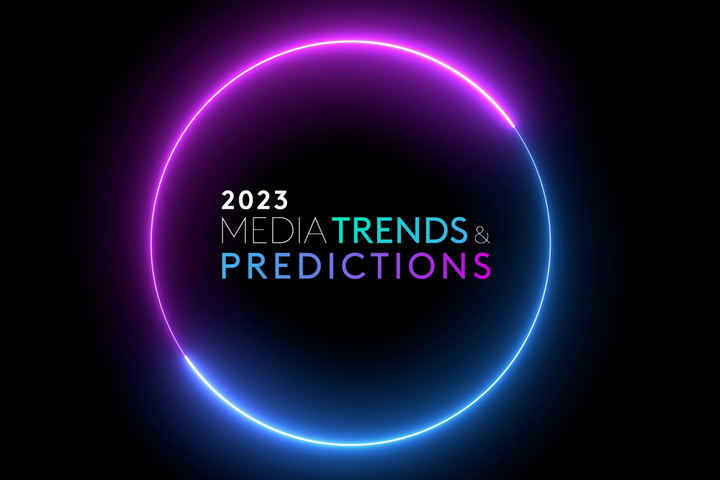2022 was an economically challenging year, and in many parts of the world, 2023 could see conditions worsen. Fortunately, we do have good strategies – tried and tested over multiple recessions – for how businesses should act during an economic crisis. The short answer is: maintain media investments.
Although challenging, the economic conditions in 2022 and moving into 2023 are notably different from previous downturns, with tighter labour markets and low unemployment in advanced economies such as the US and UK. This means smart brands will be even more inclined to maintain brand investment. Indeed, a cost of living crisis requires businesses to demonstrate value, and that, of course, requires marketing spend and audience targeting.
Kantar’s 2022 BrandZ report confirms that the businesses that invest in their brands outperform the market, and that investment in marketing remains the most powerful form of defence in times of economic crisis. Strong brands simply retain more economic value during tough times, and recover more quickly when market conditions improve. This was the case during the 2008 global crisis and, as this report shows, it’s also true today across virtually all categories.
Because inflation will hit different cohorts in unique ways, brands will need deeper audience insights to understand the implications. For example, Kantar’s TGI data reveals that ‘unconstrained couples’ in Great Britain, who typically over-index on premium or luxury goods, are showing the fastest increase in ‘regularly purchasing budget ranges’. This suggests that even the most well-off are trading down, but only on certain items. Quality remains important for food, but less so for non-alcoholic drinks, for example.
Afterall, no cost-of-living crisis is a uniform experience, and segmenting audiences to understand differences in behaviours and attitudes is essential – it helps ground campaigns in reality, and is the base starting point for creative testing of messages.
Advertisers would be wise, therefore, to look at people’s life stages and life events, rather than just demographics such as age. Demographics can be highly generalised and often fail to address personal or domestic circumstances that are likely more in tune with someone’s economic situation.
The cost-of-living crisis is also a good time for advertisers to reach new audiences. For example, we know from Kantar’s TGI data that brand repertoire for food items is increasing, with shoppers becoming more price sensitive and tactical in their purchases. Brands can capitalise on moments like these. It’s moments like these that brands can capitalise.
Brands may even wish to find new audiences through emerging channels, particularly if other high-demand media become overly expensive. Gaming, for example, is certainly worth exploring – it’s opening up to advertisers in new ways, and tough economic times tend to see people spending more time with home entertainment as they forgo more expensive nights out.
Whatever course brands take, it’s crucial they remain focused on the long term, investing now for the eventual upturn, and using data and insight to make the most informed and cost-effective decisions about their strategies and investments. The future may seem uncertain, but our plans do not have to operate blind.
Discover more on what we believe is next for the media and marketing industry by downloading our latest Media Trends & Predictions Report.
Although challenging, the economic conditions in 2022 and moving into 2023 are notably different from previous downturns, with tighter labour markets and low unemployment in advanced economies such as the US and UK. This means smart brands will be even more inclined to maintain brand investment. Indeed, a cost of living crisis requires businesses to demonstrate value, and that, of course, requires marketing spend and audience targeting.
Kantar’s 2022 BrandZ report confirms that the businesses that invest in their brands outperform the market, and that investment in marketing remains the most powerful form of defence in times of economic crisis. Strong brands simply retain more economic value during tough times, and recover more quickly when market conditions improve. This was the case during the 2008 global crisis and, as this report shows, it’s also true today across virtually all categories.
Nuanced insight
Because inflation will hit different cohorts in unique ways, brands will need deeper audience insights to understand the implications. For example, Kantar’s TGI data reveals that ‘unconstrained couples’ in Great Britain, who typically over-index on premium or luxury goods, are showing the fastest increase in ‘regularly purchasing budget ranges’. This suggests that even the most well-off are trading down, but only on certain items. Quality remains important for food, but less so for non-alcoholic drinks, for example.
Afterall, no cost-of-living crisis is a uniform experience, and segmenting audiences to understand differences in behaviours and attitudes is essential – it helps ground campaigns in reality, and is the base starting point for creative testing of messages.
Advertisers would be wise, therefore, to look at people’s life stages and life events, rather than just demographics such as age. Demographics can be highly generalised and often fail to address personal or domestic circumstances that are likely more in tune with someone’s economic situation.
Reaching new, shifting audiences
The cost-of-living crisis is also a good time for advertisers to reach new audiences. For example, we know from Kantar’s TGI data that brand repertoire for food items is increasing, with shoppers becoming more price sensitive and tactical in their purchases. Brands can capitalise on moments like these. It’s moments like these that brands can capitalise.
Brands may even wish to find new audiences through emerging channels, particularly if other high-demand media become overly expensive. Gaming, for example, is certainly worth exploring – it’s opening up to advertisers in new ways, and tough economic times tend to see people spending more time with home entertainment as they forgo more expensive nights out.
Whatever course brands take, it’s crucial they remain focused on the long term, investing now for the eventual upturn, and using data and insight to make the most informed and cost-effective decisions about their strategies and investments. The future may seem uncertain, but our plans do not have to operate blind.
Discover more on what we believe is next for the media and marketing industry by downloading our latest Media Trends & Predictions Report.


